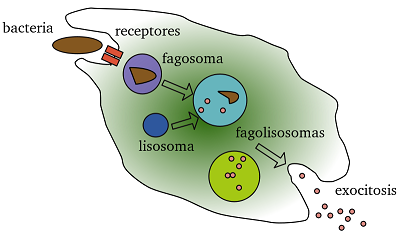Specific immunity
If the pathogenic microorganisms overcome the nonspecific barriers, the specific immunity, exclusive for each type of invader, comes into operation. Another type of white blood cell, lymphocytes, are responsible for this other type of defense mechanism.
The lymphocytes act a specific way, as they are able to recognize antigens (substances recognized as foreign) and combat. The main types of lymphocytes are:
- T lymphocytes. They recognize and destroy antigens on infected cells.
- B lymphocytes. They produce proteins, antibodies, that act as a defense against a foreign substance, antigens. Each antibody is specific for each antigen
 .
.
When the body has fought against a pathogenic microorganism, some lymphocytes were activated and remain in the body throughout life, they are memory lymphocytes. If the same microorganism tries to produce a new infection, it will quickly be detected by the memory lymphocytes and they will be neutralized. The person will not suffer from this disease again because they are already immunized, thanks to memory lymphocytes, against this pathogenic microorganism.
If the microorganism changes, such as the flu virus, the memory lymphocytes are not able to detect them and the person suffers from the disease again.
Activity: History of an infection.
Webquest: The curious case of chickenpox on the Simpsons.

